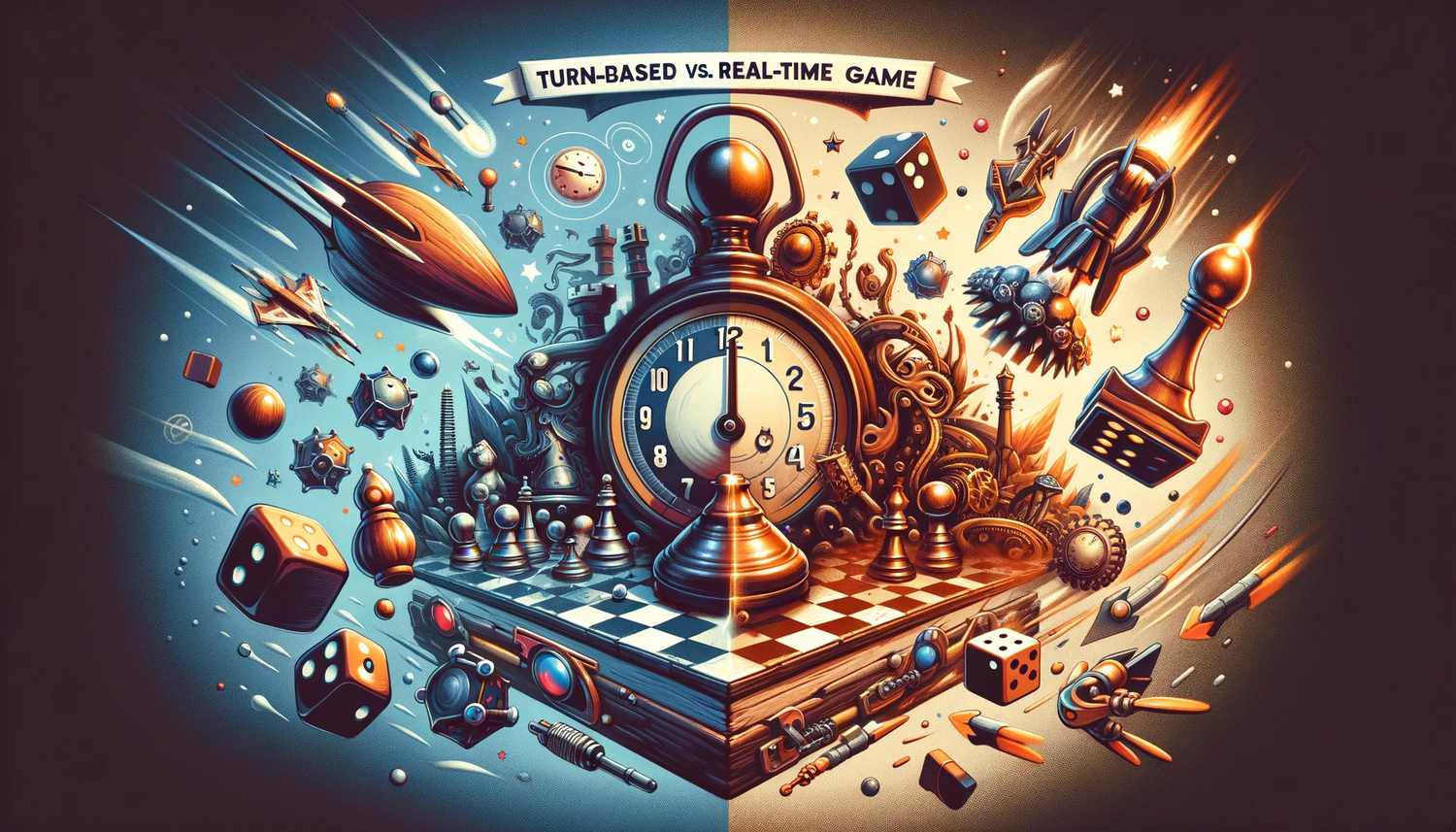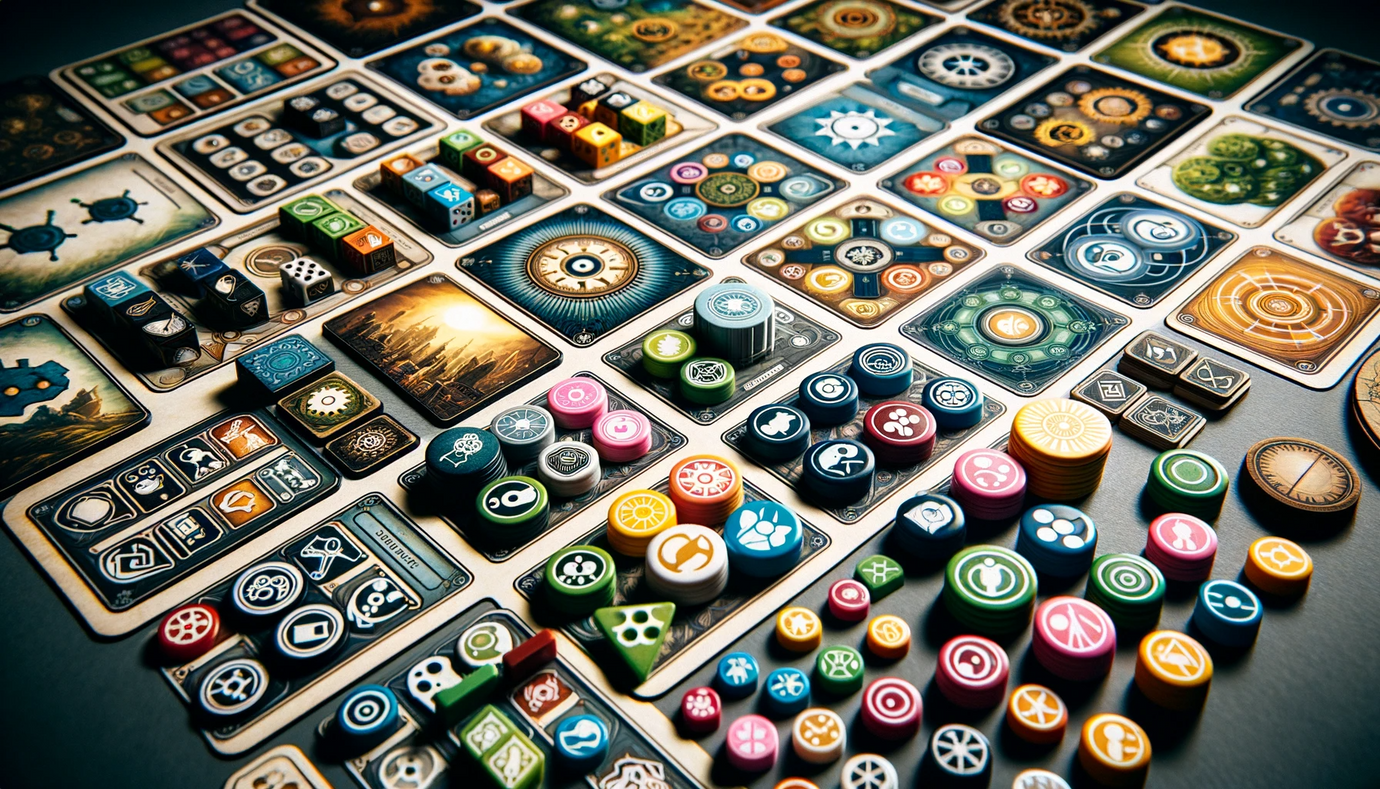Designing Turn-Based vs Real-Time Game Mechanics

Introduction
The choice between turn-based and real-time mechanics is a fundamental design decision in game development, significantly impacting the game's pacing, complexity, and player interaction. Turn-based games offer strategic depth and deliberate decision-making, while real-time games provide dynamic action and immediacy. This blog post will explore the nuances of designing both turn-based and real-time game mechanics, helping you determine which approach best fits your game’s vision and audience.
Understanding Turn-Based and Real-Time Mechanics
Turn-Based Games: These games allow players to take turns making decisions and actions. This format often emphasizes strategic planning and can accommodate deeper, more complex gameplay.
Real-Time Games: In real-time games, all players act simultaneously, often under time constraints. This format creates a sense of urgency and quick thinking.
1. Designing Turn-Based Game Mechanics
Strategic Depth: Turn-based games should offer a level of strategic depth, allowing players to plan their moves and anticipate opponents' strategies.
Turn Order and Flow: Develop a clear and fair turn order system. Consider how turn order impacts game balance and player engagement.
2. Creating Dynamic Real-Time Mechanics
Pacing and Urgency: Real-time games should have a fast pace, creating a sense of urgency. Mechanics should be designed to be executed quickly.
Simultaneous Actions: Develop mechanics that allow for, or even require, simultaneous actions from players. This could involve speed, dexterity, or quick decision-making.
3. Balancing Complexity and Accessibility
Complexity in Turn-Based Games: While turn-based games can handle more complexity, ensure that the rules are still accessible and not overwhelming.
Simplicity in Real-Time Games: Real-time games benefit from simpler mechanics due to the time pressure involved. Ensure that players can understand and react quickly.
4. Managing Player Interaction
Interaction in Turn-Based Games: Foster strategic interaction in turn-based games. This could be through direct conflict, trading, or cooperative strategies.
Immediate Interaction in Real-Time Games: Encourage immediate reactions and interactions. Real-time games often feature mechanics like bidding, rapid trading, or simultaneous selection.
5. Implementing Time Limits and Pressure
Time Pressure in Turn-Based Games: If appropriate, incorporate time limits for turns to maintain pace and prevent analysis paralysis.
Constant Pressure in Real-Time Games: In real-time games, the pressure is constant. Design elements like timers or countdowns to heighten this pressure.
6. Addressing Player Skill Levels
Skill Balance in Turn-Based Games: Ensure that turn-based games are accessible to players of various skill levels, with mechanics that are easy to learn but hard to master.
Accessibility in Real-Time Games: In real-time games, consider how reaction time and physical dexterity might affect player experience and try to balance for these factors.
7. Testing and Refinement
Playtesting: Thoroughly playtest both turn-based and real-time mechanics. Observe how players interact with the mechanics and how they affect the game’s flow and enjoyment.
Iterative Design: Use feedback from playtesting to refine the mechanics. This process may involve adjusting complexity, pacing, or the balance of player interaction.
8. Integrating Theme and Mechanics
Thematic Consistency: Ensure that the chosen mechanic (turn-based or real-time) aligns with the game’s theme. For instance, a game about fast-paced stock trading might suit real-time mechanics, while a strategic war game might be better suited to a turn-based system.
Storytelling Through Mechanics: Use the game mechanics to enhance the storytelling. The pacing and style of play should contribute to the thematic narrative of the game.
9. Enhancing Replayability
Variable Strategies: In both turn-based and real-time games, offer multiple strategies and paths to victory. This enhances replayability and player engagement.
Dynamic Gameplay Elements: Introduce elements that change from game to game, such as modular boards, random events, or different player powers.
10. Finalizing Game Mechanics
Consolidation and Finalization: After extensive testing and refinement, finalize your mechanics. Ensure they provide a balanced, enjoyable, and thematic gaming experience.
Clarity in Rules: Whether turn-based or real-time, ensure that the rules are clear, concise, and easy to understand.
Choosing between turn-based and real-time mechanics is a significant decision in game design. Each offers a distinct style of play and can attract different types of players. By carefully considering your game's theme, audience, and desired level of interaction and complexity, and through rigorous testing and refinement, you can create a game that excites and engages your players, whether they’re strategizing turn by turn or racing against the clock in real-time.







